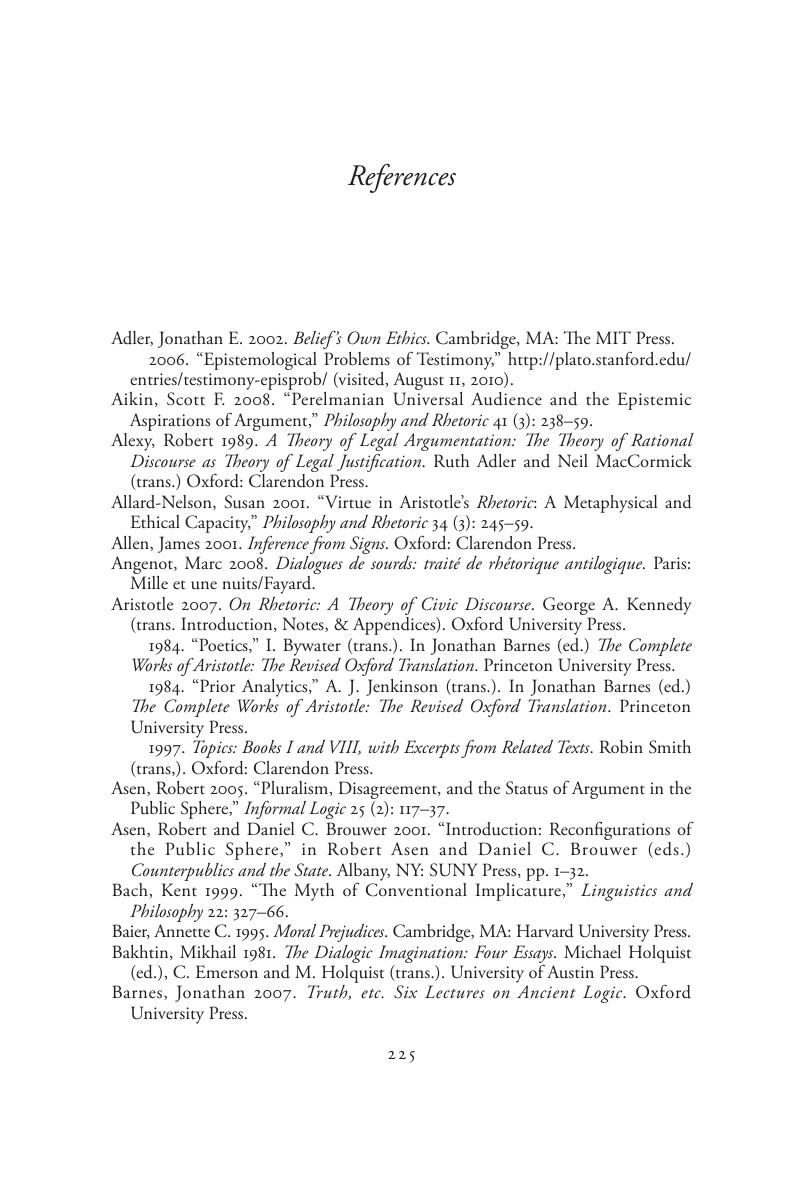Book contents
- The Philosophy of Argument and Audience Reception
- The Philosophy of Argument and Audience Reception
- Copyright page
- Dedication
- Contents
- Book part
- Chapter 1 The role of audience in a theory of argumentation
- Chapter 2 Argumentation and its issues
- Chapter 3 Aristotle and the natures of audiences
- Chapter 4 Perelman’s audiences: a meeting of minds
- Chapter 5 Habermas and the ideal audience
- Chapter 6 Meaning and reasons
- Chapter 7 Evidence and reasons: the place of testimony
- Chapter 8 Emotion and reasons
- Chapter 9 Agency and reasons
- Chapter 10 Making meaning present
- Chapter 11 Audiences and addressees: the experience of reception
- Chapter 12 Historical arguments and elective audiences
- References
- Index
- References
References
Published online by Cambridge University Press: 05 May 2015
- The Philosophy of Argument and Audience Reception
- The Philosophy of Argument and Audience Reception
- Copyright page
- Dedication
- Contents
- Book part
- Chapter 1 The role of audience in a theory of argumentation
- Chapter 2 Argumentation and its issues
- Chapter 3 Aristotle and the natures of audiences
- Chapter 4 Perelman’s audiences: a meeting of minds
- Chapter 5 Habermas and the ideal audience
- Chapter 6 Meaning and reasons
- Chapter 7 Evidence and reasons: the place of testimony
- Chapter 8 Emotion and reasons
- Chapter 9 Agency and reasons
- Chapter 10 Making meaning present
- Chapter 11 Audiences and addressees: the experience of reception
- Chapter 12 Historical arguments and elective audiences
- References
- Index
- References
Summary

- Type
- Chapter
- Information
- The Philosophy of Argument and Audience Reception , pp. 225 - 237Publisher: Cambridge University PressPrint publication year: 2015

